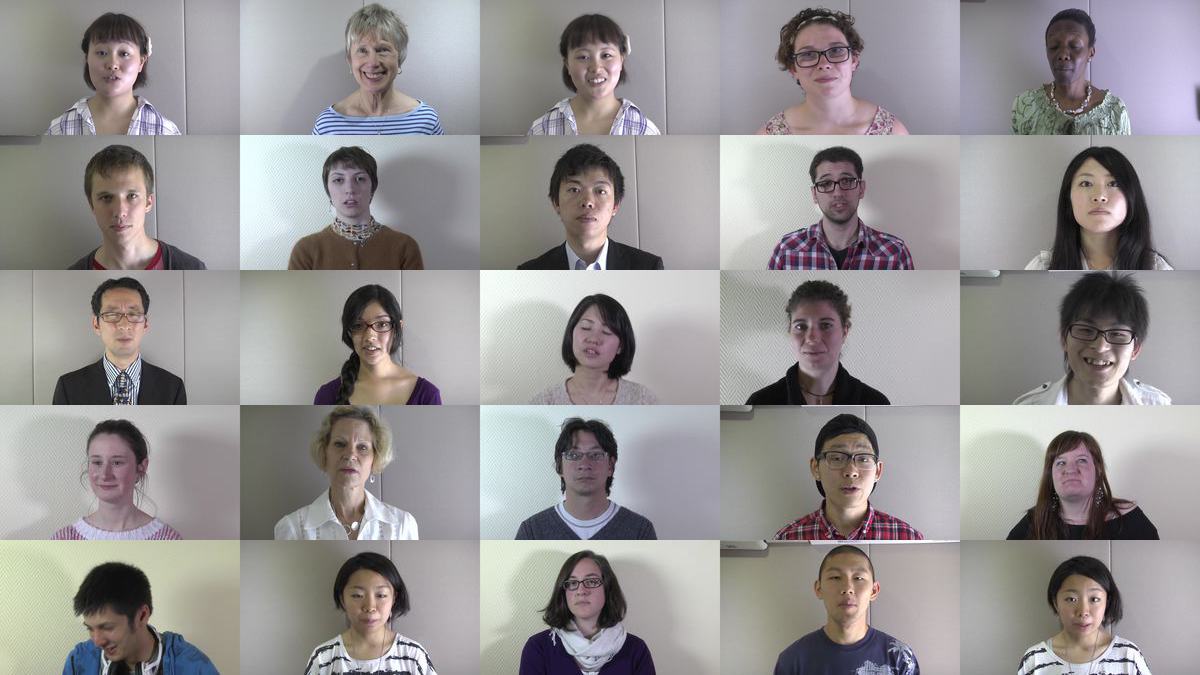International workshop on audio-visual affective prosody in social interaction & second language learning
(AVAP 2015)
Bordeaux, 5 and 6 March 2015

Mariko Kondo
English liquids production by Japanese speakers reconsidered
SILS,GSICCS & LASS, Waseda University (Japan)
It is well known that Japanese speakers have difficulty in differentiating the liquid consonants /l/ and /r/ (e.g. Miyawaki et al 1975; Yamada and Tohkura 1992; Flege et al. 1996). /l/ and /r/ are not contrastive in Japanese, and allophonic variations of both /l/ and /r/ occur in Japanese speech. The most common realization is alveolar tap [ɾ], but [l] also occurs in natural speech (Arai, 1999). However, these variants are phonemically all recognized as /r/ in Japanese.
First I will discuss pronunciation error analysis of /l/ and /r/ by Japanese speakers, using a large English learner corpus, J_AESOP (Meng et al., 2009, Vischeglia et al., 2009, Kondo, 2012). We found that Japanese speakers substituted /r/ for /l/ (418 examples out of 2,142 consonantal errors) much more often than substituting /l/ for /r/ (124 examples out of 2,142 consonantal errors).
Next, I will discuss the results of further studies currently in progress which suggest that Japanese speakers may actually be able to hear English /r/. For example, loanword phonology from English to Japanese shows that Japanese speakers can differentiate English /l/ and /r/ in some phonological environments. Current articulatory studies also have shown that Japanese consonants lack lip rounding, whereas English approximant /r/ is produced with lip rounding i.e. acoustically characterized with a low F3 and relatively slow transition of F1 to the following vowel. Another study is examining Japanese speakers’ mimicry of both native English speech and English speakers speaking Japanese, and it shows overuse and exaggeration of an approximant /r/.
These findings suggest that Japanese speakers are able to hear English /r/. They may not be able to completely discriminate /r/ from /l/, but they can at least recognize it as an unusual “very English” sound. These results still need further confirmation, but if confirmed it suggests that pronunciation teaching in language classes should focus more on /l/ than on /r/.
Selected references:
Meng, H, Tseng, C, Kondo, M, Harrison, A and Visceglia, T (2009) “Studying L2 Suprasegmental Features in Asian Englishes: A Position Paper”. Proceedings of 2009 INTERSPEECH, 1715-1718.
Yamada, R A & Tohkura, Y (1992) “Perception of English /r/ and /l/ by native speakers of Japanese. In Tohkura, Y, Vatikiotis-Bateson, E and Sagisaka, Y (eds.). Speech Perception, Production and¸ Linguistic Structure, 155-174. Tokyo: OHM Publishing Co. Ltd.
Flege, J E, Takagi, N and Mann, V (1996) “Lexical familiarity and English-language experience affect Japanese adults’ perception of /ɹ/ and /l/”. JASA, 99 (2) Feburary. 1161-1173.
Miyawaki, K, Strange, W, Verbrugge, R R, Liberman, A M, Jenkins, J J and Fujimura, O (1975) “An effect of linguistic experience: The discrimination of [r] and [l] by native speakers of Japanese and English”. Perception & Psychophysics, 18. 331-340.
Visceglia, T, Tseng, C, Kondo, M, Meng, H, and Sagisaka, Y. (2009) “Phonetic Aspects of Content Design in AESOP (Asian English Speech cOrpus Project)”. 2009 Oriental COCOSDA. 52-57.
Arai, T (1999) A case study of spontaneous speech in Japanese, Proceedings of XIVth ICPhS.
Kondo, M (2012) “Design and Analysis of Asian English Speech Corpus - How to Elicit L1 Phonology in L2 English Data-”. In Tono, Y, Kawaguchi, Y and Minegishi, M (eds.). Tokyo University of Foreign Studies, Studies in Linguistics Vol. IV: Developmental and Crosslinguistic Perspectives in Learner Corpus Research, 251-278. Amsterdam/Philadelphia: John Benjamins.
